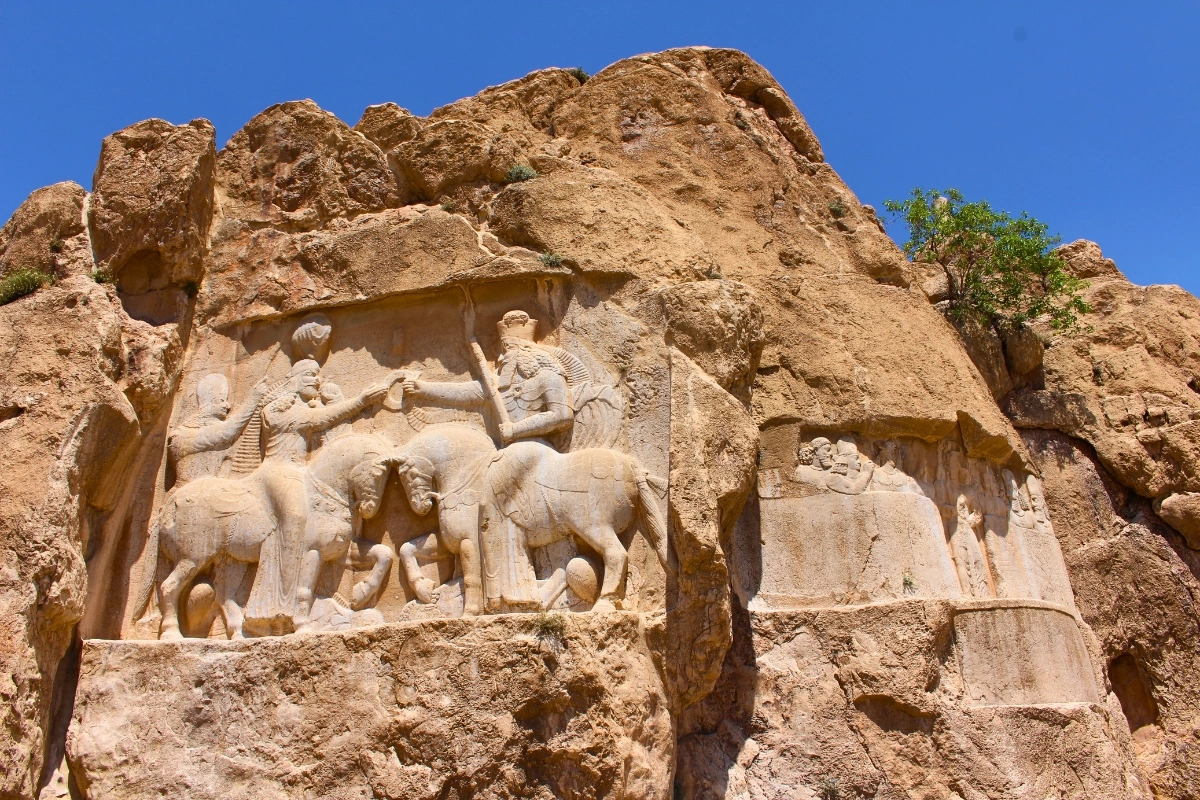
Visitors to southeastern Iran tend to focus on the city of poets, Shiraz, and the nearby ruins of Persepolis, the ancient Persian capital destroyed by Alexander the Great in 330BC. However, around 100km further south is a lesser-known series of ancient remains.
Image: Marco Ramerini/Shutterstock
Recent drone footage has helped public perceptions better appreciate one of Iran’s lesser-known ancient marvels—the Palace of Ardashir I (180-242 AD) near Firuzabad. Built in 224AD, the architecture of its domes was cited by Robert Byron[1] as including the original example of a squinch—the triangular support device that provides strength for heavy yet spacious curves.
Though in ruins, the fact that several hefty wall sections, arches, and dome bases survive is quite remarkable, given that it was built of mortared rubble rather than cut stone blocks. And that it dates from an era before the first fracture of the Roman Empire (a process that Ardashir’s successors would partly cause). The building has sometimes been described as Atesh-Kadeh (i.e. fire temple), but although there was likely a Zoroastrian shrine here, the term is misleading, and its archaeologists agree that its main purpose was as a fortified palace.
Ardashir himself was the founding ruler of one of Persia’s great dynasties, the Sassanians[2], named in honour of Ardashir’s progenitor Sasan, though there is scholarly disagreement as to whether Sasan was actually his father or grandfather. Ardashir really rose to prominence when his forces defeated the previously dominant Parthians at Hormozdgan. The site of that battle has not been identified with any accuracy, but the event was just one of many self-promoting glories that Ardashir ensured would remain recorded for posterity. He did this by creating several important stone inscriptions and reliefs high above the ground, outlining his many accomplishments. While less famous than that at Naqsh-e Rostam, there are important such carvings a few kilometres north of the palace site beside the ancient road towards Shiraz. One shows his symbolic blessing as ruler by Ahura Mazda, the Zoroastrian creator deity. Nearby are the rumbling remnants of Ardashir’s castle, Qaleh Dokhtar, dating from 209AD and from where he initiated his attacks on the Parthians.

Image: public domain
Once the Sassanians were secure in their victory, Ardashir set about building not only his palace but the greatest city of its time, around 5km further south. The site of a settlement that, like Persepolis, had been torched by Alexander the Great in the 4th century BC, the newly incarnated city was initially named in his honour as Ardashir-Khwarrah—though after the arrival of Islam several centuries later, it would take the better-known name Gur (Shahr-e Gour).
The city was remarkable for being an early example of large-scale city planning, and though the site has been essentially abandoned for centuries, satellite imagery very clearly shows its most extraordinary feature—that it was an almost perfect circle that was 2km across. Parts of the once great rampart and moat are still visible, but almost all signs of housing have been long since ploughed into fields. Today, you’ll see just a few muddy undulations, the odd stone block and a stunted tower at the centre of the circle, which is the only real sign of any ancient habitation.

[1] In his famous if snobbishly opinionated 1934 travelogue, Road to Oxiana
[2] The Sassanians/Sassanids are not to be confused with the Azerbaijani-Turkic Safavids, who came to power over 12 centuries later
Share on social media